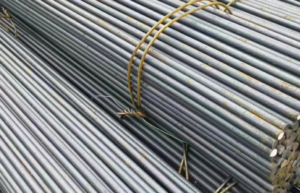Spring steel with high yield strength occupies a pivotal position in the world of metalworking and materials engineering. Its unique properties and applications make it a sought-after material in various industries, ranging from automotive components to precision instruments. This article delves into the intricacies of spring steel with high yield strength, highlighting its characteristics, manufacturing processes, and applications.

Spring Steel with High Yield Strength
Introduction to Spring Steel
Spring steel is a type of steel that exhibits high elasticity. It is designed to undergo significant elastic deformations without permanent set or fracture. This characteristic is achieved through a combination of alloy composition, heat treatment, and manufacturing techniques. Spring steel is typically categorized based on its carbon content, with low, medium, and high carbon grades. spring steel with high yield strength falls into the latter category, offering exceptional strength and resilience.
What is Yield Strength?
Yield strength, denoted by σy or σ0.2, is a critical mechanical property of metals and alloys. It represents the stress at which a material begins to exhibit plastic deformation, i.e., the material no longer returns to its original shape after the stress is removed. High yield strength implies that a material can withstand greater loads before undergoing permanent deformation, making it ideal for applications requiring resilience and durability.
Composition of High Yield Strength Spring Steel
The composition of spring steel with high yield strength is carefully tailored to achieve the desired properties. The primary alloying elements include carbon, silicon, manganese, and chromium. Carbon provides the basis for strength, while silicon aids in deoxidization and improves ductility. Manganese enhances strength and hardenability, while chromium improves corrosion resistance. The precise balance of these elements, along with trace additions of other alloying elements, determines the final properties of the steel.
Manufacturing Processes
The manufacturing of spring steel with high yield strength involves several key steps. The initial step is the smelting of the raw materials, followed by alloying and casting into ingots. These ingots are then subjected to hot rolling to achieve the desired shape and dimensions. The rolled steel is then heat-treated, typically through a combination of quenching and tempering, to achieve the desired mechanical properties. Quenching involves rapid cooling of the steel to induce martensite formation, while tempering relieves internal stresses and improves toughness.
The final step in the manufacturing process is the formation of springs. This can be done through various methods, such as wire coiling, sheet bending, or bar bending. The formed springs are then subjected to further heat treatment and surface finishing to ensure optimal performance.
Properties of Spring Steel with High Yield Strength
High yield strength spring steel exhibits several noteworthy properties:
- High Strength: The primary characteristic of this steel is its ability to withstand significant loads without undergoing permanent deformation. This is crucial for springs that must maintain their shape and functionality over extended periods.
- Good Elasticity: Spring steel must exhibit excellent elasticity, allowing it to recover its original shape after deformation. High yield strength steel achieves this through a combination of alloy composition and heat treatment.
- Resistance to Fatigue: Springs are subjected to repeated loading cycles, and as such, they must be able to resist fatigue failure. High yield strength spring steel is designed to withstand these cyclic stresses with minimal degradation in performance.
- Corrosion Resistance: Depending on the alloy composition, high yield strength spring steel can exhibit varying levels of corrosion resistance. Chromium additions, for instance, can significantly improve corrosion resistance.
- Workability: While high yield strength steel is designed for strength and resilience, it must also be workable to facilitate forming and machining operations. The balance between strength and workability is a crucial consideration in the design of spring steel alloys.
Applications of Spring Steel with High Yield Strength
High yield strength spring steel finds widespread applications in various industries:
- Automotive Industry: Springs in automotive suspensions, valves, and seat mechanisms rely on high yield strength steel to maintain performance over extended periods.
- Industrial Machinery: Springs in pumps, compressors, and other industrial equipment require resilience and durability to handle heavy loads and cyclic stresses.
- Precision Instruments: High yield strength spring steel is used in precision instruments, such as scales and measuring devices, where accuracy and repeatability are paramount.
- Aerospace Industry: Springs in aerospace applications, such as landing gear and control surfaces, must be lightweight yet robust enough to handle extreme conditions.
Conclusion
Spring steel with high yield strength is a versatile material with a wide range of applications. Its unique combination of strength, resilience, and workability makes it an ideal choice for springs that must perform reliably under demanding conditions. The precision in alloy composition, heat treatment, and manufacturing processes ensures that high yield strength spring steel meets the rigorous standards of modern industry.
Thank you for reading our article and we hope it can help you to have a better understanding of the spring steel with high yield strength. If you are looking for spring steel manufacturers and suppliers online now, we would advise you to visit Sino Special Metal.
As a leading supplier of spring steel from Shanghai, China, Sino Special Metal offers customers high-quality spring steel products at a very competitive price.




